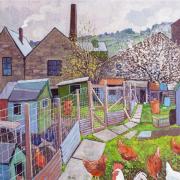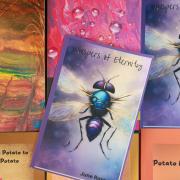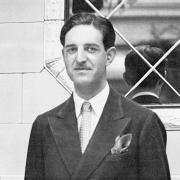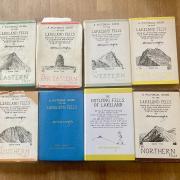An ancient mill in Kendal is home to the world's oldest surviving industrial hardwear still in production, writes Martin Pilkington Photography by John Cocks
Entering Kendal Brown House, the rich dark aromas envelop you like a cosy fog. The fabric of the mill is impregnated with the scents of tobacco processed here since 1881; even more, some of the machinery that has ground snuff for its owners since 1792.
Snuff-making in Kendal began in that year thanks to the enterprising Thomas Harrison, who studied the trade in Scotland before buying second-hand machinery that he shipped down from Inverness. ‘It was moved by donkey, packhorses, carts, and human flesh – 50 tons of machinery – over rutt tracks. This was a bit before the M6!’ says Bob Gregory, General Manager of Samuel Gawith & Company. ‘It was originally made to grind gunpowder during the reign of George II, and has been dated to about 1750.’
When General Wolfe captured Quebec his muskets may have used powder produced by this seemingly immortal piece of equipment. In 1965 an engineering magazine thought it the oldest production machinery in regular use anywhere in the world, a situation unlikely to have changed since then.
The company is still family-owned, the line back to Thomas Harrison unbroken – Samuel Gawith was his granddaughter’s husband. Some of its snuffs and pipe and chewing tobaccos are of a style the the founder would recognise, But who takes snuff nowadays?
‘Snuff-taking is a bit of a dark secret – the number of people who take snuff but won’t admit to it is amazing. It’s a sort of secret society,’ says Bob. A little digging shows Stephen Fry is a fan, and Sean Bean is rumoured to enjoy a pinch or two, though whether that’s through his Yorkshire roots or from filming Sharpe is unclear. Coal-miners, notably in Yorkshire and Nottinghamshire, were a traditional market, taking snuff down the pits where smoking was prohibited.
While UK mining has declined, a similar logic is helping them expand business globally. ‘Snuff is becoming more popular because of the smoking bans all over the world, which is why we have a growing export market,’ he continues. They sell to Canada, the USA, Mexico and Argentina, throughout the Far East and Europe and as far as Australia.
‘Keeping all the different labels is a nightmare,’ he tells me. In the packing room to prove his point, tins are being readied for Armenia, the script utterly unintelligible.
Bob shows me the different tobaccos used in their blends – Virginia, Turkish, wood-smoky Latakia from Syria and Cyprus and the many forms into which they are processed. They are pressed and heated to make bricks from which flake will be cut, dried golden leaf, rolled into oily ‘rope’ and ground to differing degrees of fineness for snuff. When he strokes some extremely fine Irish ‘D’ Light some escapes to induce a brief coughing fit in his audience.
The mill is a stone’s throw from the river and right by the canal, the Victorian building a succession of small rooms unlike any modern production system, some of the spaces divided by great thick wooden doors, and everywhere piles of tobacco and snuff between processes. We wend our way to the snuff-grinding area. The fragrance of tobacco is even headier here.
‘Clive, our snuff-maker, has been here for 35 years. It’s not a three-week course to get the necessary skill, more like three years.’ Giant cast iron cogs mesh over our heads, leather belts transferring power to them from an electric motor where once water drove the thing.
Essentially, it is two large mortars with roller-pestles to grind the tobacco into powder. ‘About 99 per cent is original – some of the rollers have been replaced because of general wear and tear. It is virtually as it was when it was built and doesn’t need that much maintenance, just a little TLC. It gets regular cleaning, regular greasing, and it’s OK – the fact is, the machine itself is so over-engineered that it won’t really go wrong,’ Bob says. ‘And it makes the snuff as we want it – not flat like talcum powder, but fluffy and light, and that’s down to the machine.’
Some of the central drive wheels have wooden teeth, a design element that dates it pre-1760; but they have a technical advantage too. ’They act like a fuse-box - if the pressure gets too great it’s the teeth that go rather than the rest of the mechanism,’ explains Bob. Not that the machine is delicate – as well as surviving the move from Scotland this is its third home in Kendal, but Bob hopes they won’t need to move for another 200 years.
‘We are gradually upgrading the building which takes time and money. And we’re increasing capacity to meet demand - when you are supplying worldwide you’ve got to make sure you can deliver.’ They have had plenty of practice though.
Bob is part of a team of just seven, effectively hand-processing all their range – and it is a vast range with innumerable permutations of blend, fineness, moisture level and flavourings like menthol and peppermint, plus indefinable styles like Grousemoor. The tins displayed in the meeting room would be the envy of many collectors. Occasionally they have made snuffs to order. ‘An old lady told by her doctor to stop drinking and smoking called us and asked for a gin and tonic flavoured snuff, so we obliged and still sell it,’ Bob tells me.
Even the committed non-smoker would find it hard not to warm to this business with its 18th century soul. Leaving the building you carry the smell of perfumed tobaccos on your clothing. With cigarette smoke such a residue would be unwelcome, with snuff it is a perfumed pleasure. Which perhaps is why the habit is on the increase again.
The print version of this article appeared in the April 2012 issue of Lancashire Life We can deliver a copy direct to your door – order online here


























